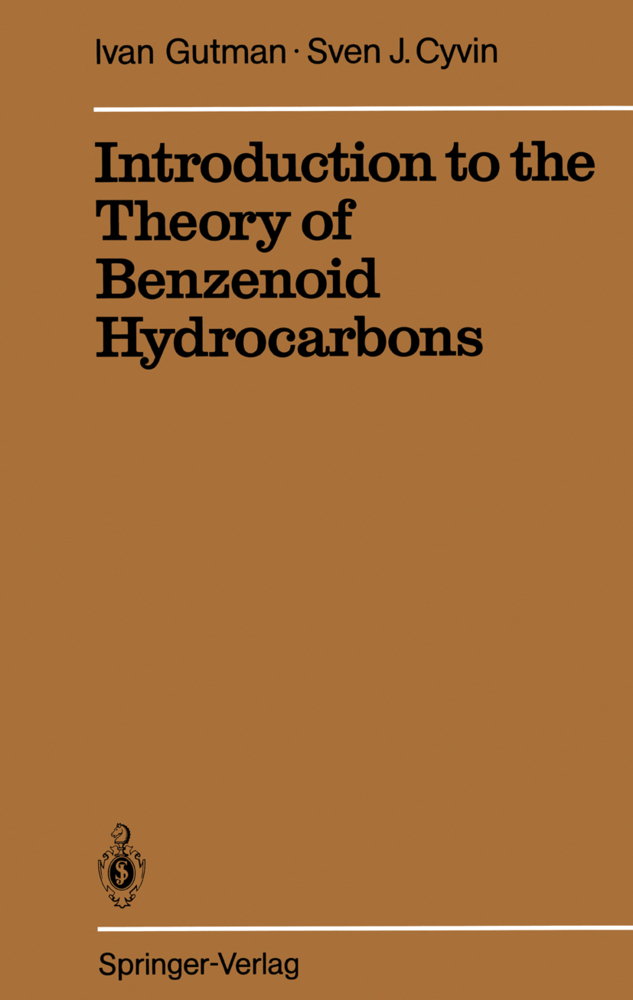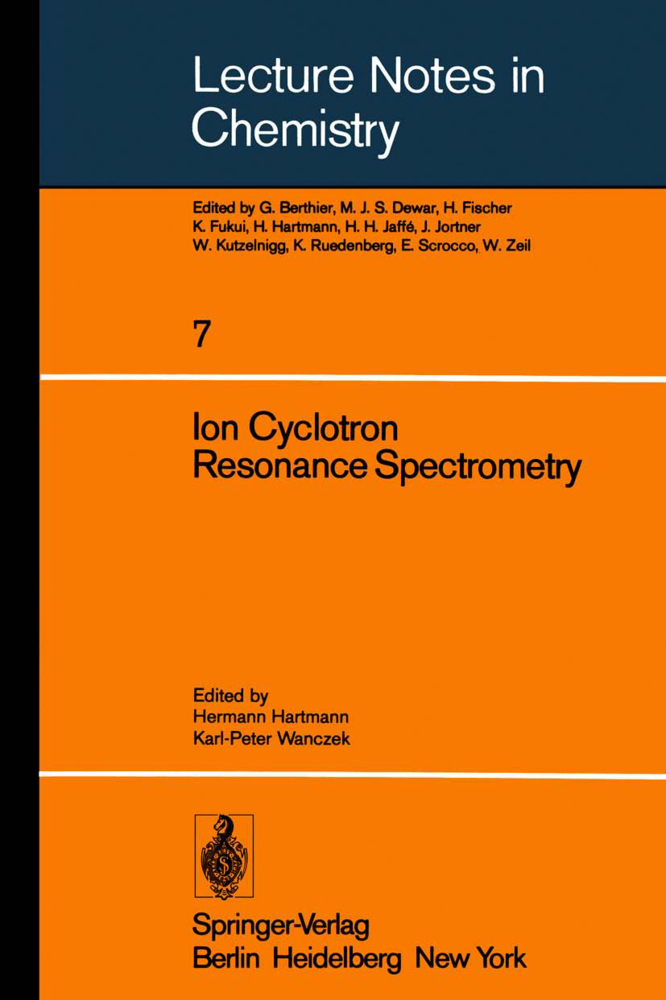Introduction to the Theory of Benzenoid Hydrocarbons
Introduction to the Theory of Benzenoid Hydrocarbons
In the last hundred years benzenoid hydrocarbons have constantly attracted the attention of both experimental and theoretical chemists. In spite of the fact that some of the basic concepts of the theory of benzenoid hydrocarbons have their origins in the 19th and early 20th century, research in this area is still in vigorous expansion. The present book provides an outline of the most important current theoretical approaches to benzenoids. Emphasis is laid on the recent developments of these theories, which can certainly be characterized as a significant advance. Em phasis is also laid on practical applications rather than on "pure" theory. The book assumes only some elementary knowledge of organic and physical chemistry and requires no special mathematical training. Therefore we hope that undergraduate students of chemistry will be able to follow the text without any difficulty. Since organic and physical chemists are nowadays not properly acquaint ed lVith the modern theory of benzenoid molecules, we hope that they will find this book both useful and informative. Our book is also aimed at theoretical chemists, especially those concerned with the "topological" features of organic molecules. The authors are indebted to Dr. WERNER SCHMIDT (Ahrensburg, FRG) for valuable discussions. One of the authors (1. G.) thanks the Royal Norwegian Council for Scientific and Industrial Research for financial support during 1988, which enabled him to stay at the University of Trondheim and write the present book. Trondheim, July 1989 Ivan Gutman Sven J. Cyvin Contents Chapter 1 Benzenoid Hydrocarbons .
1.2 Nomenclature
1.3 Occurrence
1.4 Applications
1.5 Benzenoid Hydrocarbons as Pollutants
2 Benzenoid Systems
Interlude
3 Anatomy
3.1 Symmetry
3.2 Vertices, Edges, and Related Concepts
3.3 Coloring of Vertices
3.4 Peaks and Valleys
3.5 1-Factors and Kekulé Structures
3.6 The Dualist Graph
3.7 More about Symmetry
4 Enumeration
4.1 General Principles
4.2 Symmetry
4.3 First and Second Classification
4.4 Catacondensed Benzenoid Systems
4.5 Pericondensed Benzenoid Systems
4.6 Classification According to the Number of Internal Vertices or the Number of External Vertices, and Enumeration of Chemical Isomers
4.7 Classification According to Color Excess
4.8 More about Symmetry
4.9 All-Benzenoid Systems
5 Kekulé Structures
5.1 Methods for Kekulé Structure Enumeration
5.2 The Case of K = 0
5.3 Resonance Theory
5.4 Kekulé Structures and the Thermodynamic Stability of Benzenoid Hydrocarbons
5.5 Kekulé Structures and Bond Lengths
5.6 Kekulé Structures and Other Physico-Chemical Properties of Benzenoid Hydrocarbons
6 Conjugated Circuits
6.1 Alternating Cycles
6.2 The Conjugated Circuit Model
6.3 The Basic Theorem
6.4 Connection with Herndon's Resonance Theory
6.5 Algorithms and Theorems
7 Aromatic Sextets
7.1 The History of the Aromatic Sextet
7.2 Clar's Aromatic Sextet Theory
7.3 Generalized Clar Structures
7.4 The Sextet Polynomial
7.5 Concepts Related to the Sextet Polynomial
7.6 The Valence-Bond Method of Herndon and Hosoya
8 Coronoids
8.1 Coronoid Hydrocarbons
8.2 Coronoid Systems
8.3 Anatomy
8.4 Enumeration
8.5 Kekulé Structures
8.6 Clar Structures and All-Coronoids
9 Back to Chemistry
9.1 Thermodynamic Properties ofBenzenoid Hydrocarbons
9.2 More on Non-Kekuléan Benzenoid Hydrocarbons
9.3 Extraterrestrial Benzenoid Hydrocarbons
References.
1 Benzenoid Hydrocarbons
1.1 Acquaintance1.2 Nomenclature
1.3 Occurrence
1.4 Applications
1.5 Benzenoid Hydrocarbons as Pollutants
2 Benzenoid Systems
Interlude
3 Anatomy
3.1 Symmetry
3.2 Vertices, Edges, and Related Concepts
3.3 Coloring of Vertices
3.4 Peaks and Valleys
3.5 1-Factors and Kekulé Structures
3.6 The Dualist Graph
3.7 More about Symmetry
4 Enumeration
4.1 General Principles
4.2 Symmetry
4.3 First and Second Classification
4.4 Catacondensed Benzenoid Systems
4.5 Pericondensed Benzenoid Systems
4.6 Classification According to the Number of Internal Vertices or the Number of External Vertices, and Enumeration of Chemical Isomers
4.7 Classification According to Color Excess
4.8 More about Symmetry
4.9 All-Benzenoid Systems
5 Kekulé Structures
5.1 Methods for Kekulé Structure Enumeration
5.2 The Case of K = 0
5.3 Resonance Theory
5.4 Kekulé Structures and the Thermodynamic Stability of Benzenoid Hydrocarbons
5.5 Kekulé Structures and Bond Lengths
5.6 Kekulé Structures and Other Physico-Chemical Properties of Benzenoid Hydrocarbons
6 Conjugated Circuits
6.1 Alternating Cycles
6.2 The Conjugated Circuit Model
6.3 The Basic Theorem
6.4 Connection with Herndon's Resonance Theory
6.5 Algorithms and Theorems
7 Aromatic Sextets
7.1 The History of the Aromatic Sextet
7.2 Clar's Aromatic Sextet Theory
7.3 Generalized Clar Structures
7.4 The Sextet Polynomial
7.5 Concepts Related to the Sextet Polynomial
7.6 The Valence-Bond Method of Herndon and Hosoya
8 Coronoids
8.1 Coronoid Hydrocarbons
8.2 Coronoid Systems
8.3 Anatomy
8.4 Enumeration
8.5 Kekulé Structures
8.6 Clar Structures and All-Coronoids
9 Back to Chemistry
9.1 Thermodynamic Properties ofBenzenoid Hydrocarbons
9.2 More on Non-Kekuléan Benzenoid Hydrocarbons
9.3 Extraterrestrial Benzenoid Hydrocarbons
References.
| ISBN | 978-3-642-87145-0 |
|---|---|
| Medientyp | Buch |
| Copyrightjahr | 2012 |
| Verlag | Springer, Berlin |
| Umfang | IX, 152 Seiten |
| Sprache | Englisch |










